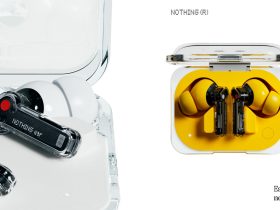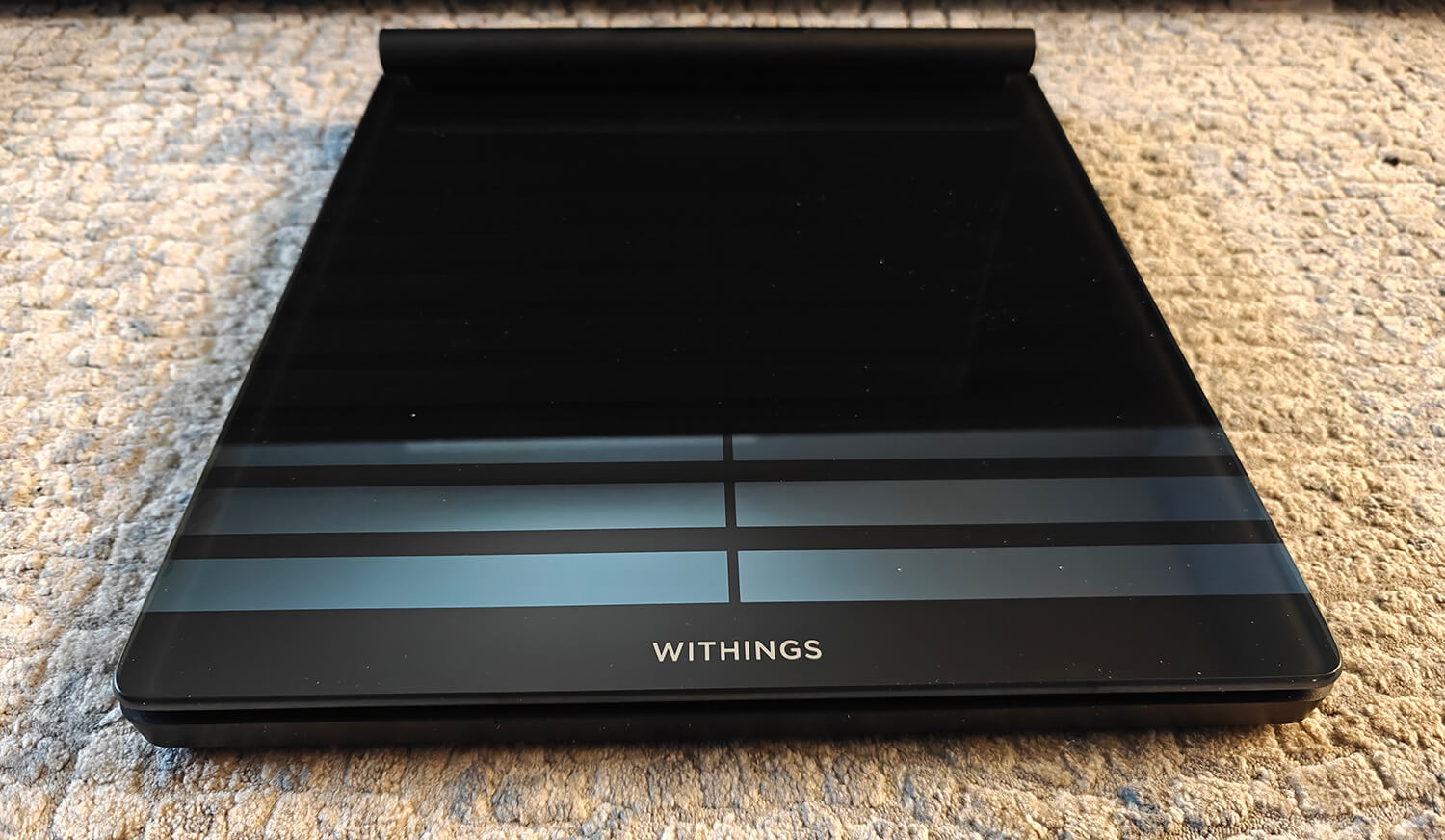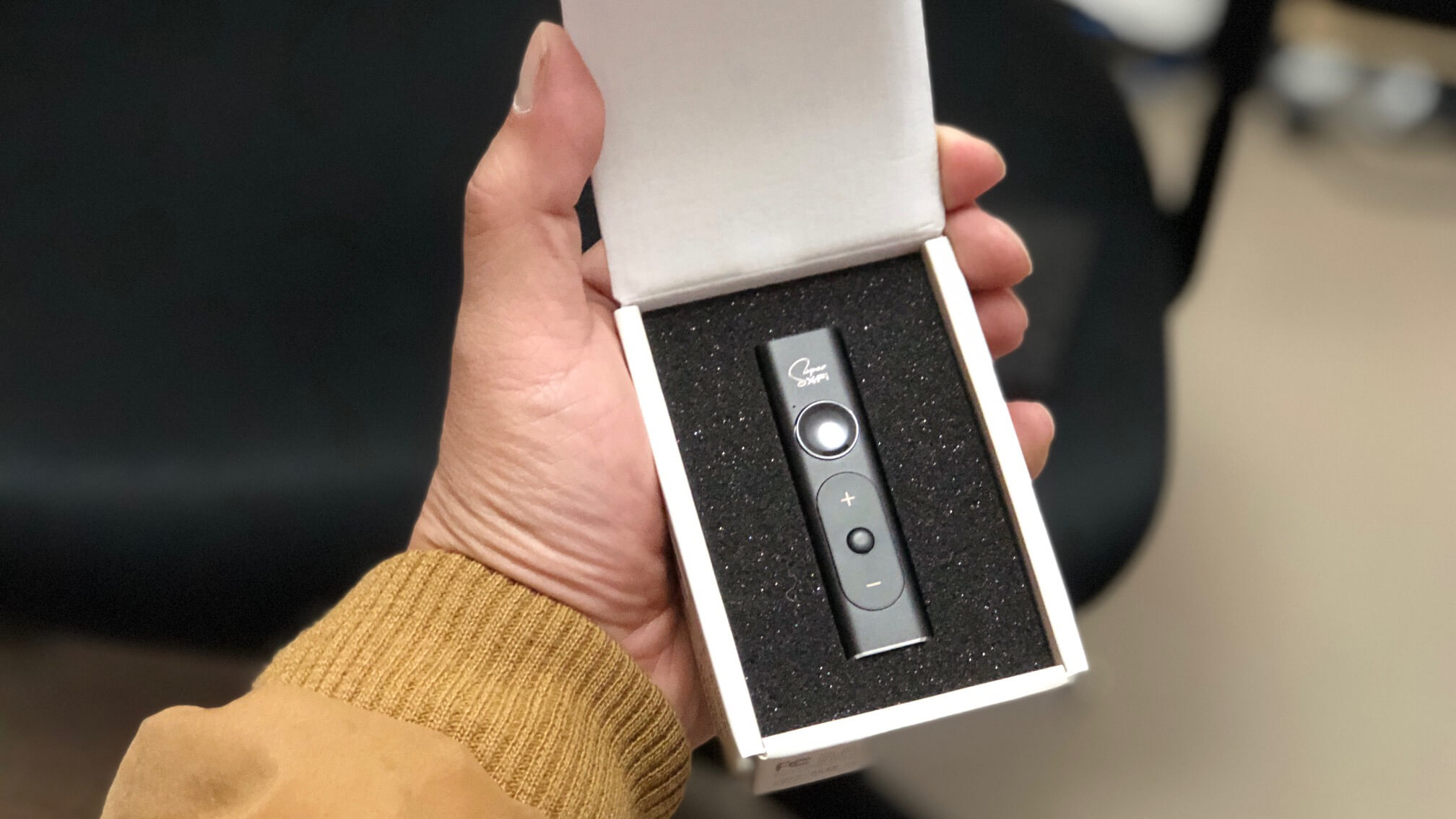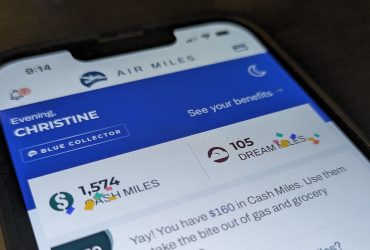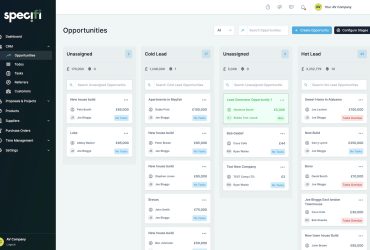I have been using smart scales for years. I love the ability to connect one to my smartwatch and view an ongoing log of data. I also love that you get more than just a three-digit weight number in pounds and body mass index. A healthy body make-up is about so much more than what the scale says you weigh.
I reviewed the Withings Body Smart smart scale last year, and now, the company has followed it up with the Body Segment smart scale, easily its smartest scale yet. For those who are into fitness, or even anyone concerned about health and wellness, whether you’re concerned about anything from heart-related diseased to diabetes, unhealthy weight distribution or a lack of muscle mass, this scale is as premium as you can get in this space.
What is the Withings Body Segment Smart Scale?
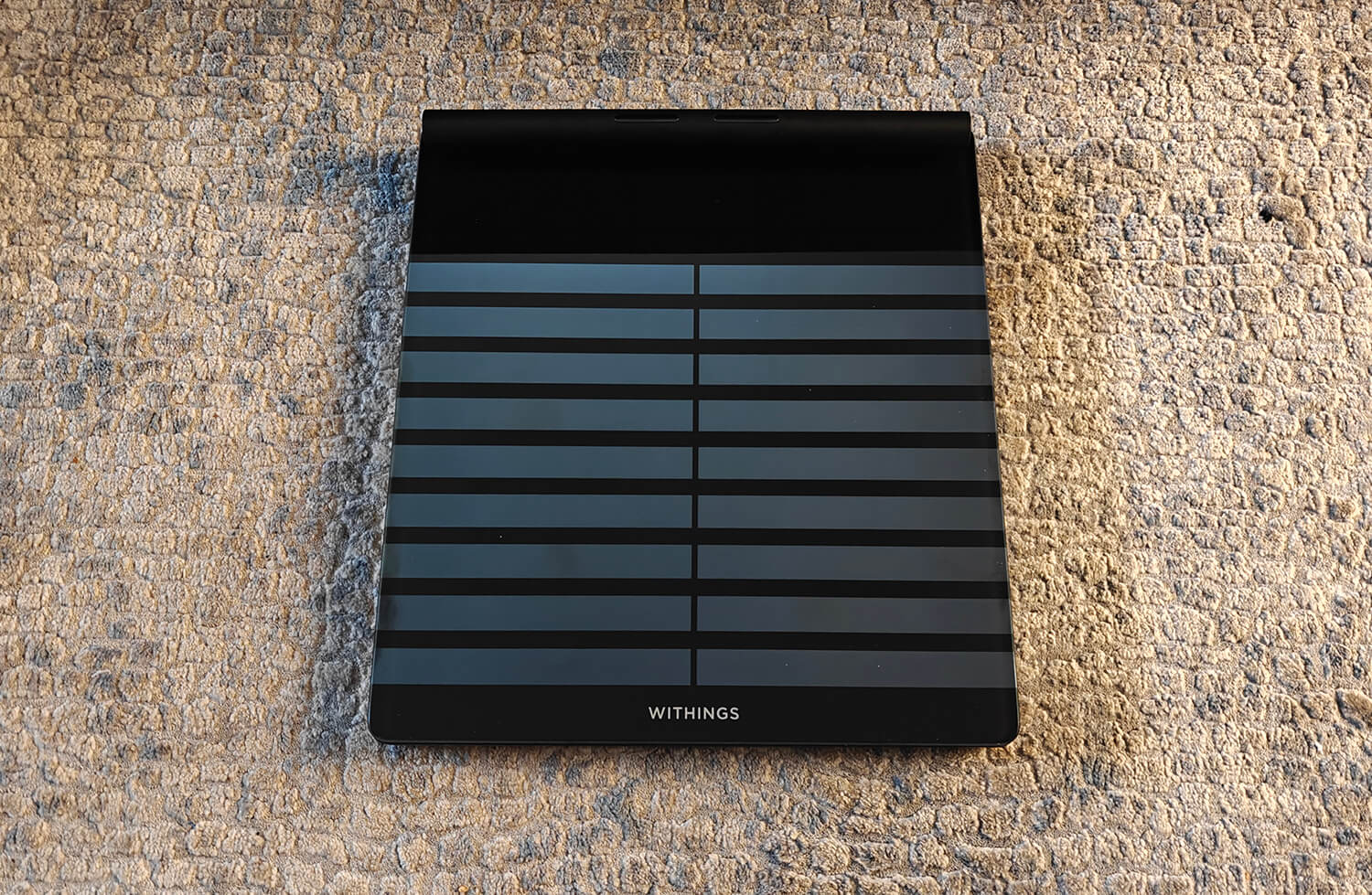
Like others in the Withings smart scale line, the Withings Body Segment smart scale measures weight, body mass index, heart rate, EDA, visceral fat, and other details about your body composition (see the end for a breakdown of what this all means). Fat and muscle mass is measured through a retractable handle that conducts bioelectrical impedance analysis (BIA). There are four electrodes in the glass plate you step on and four more in the handle.
What is BIA? It’s a way to measure body composition through weak electric current that flows through your body. The voltage is measured to capture resistance and reactance. The more fat, the more resistance to the current. It’s considered highly accurate, though there are factors that can impact a reading, like if you are obese, dehydrated (this can cause an underestimation of muscle and bone mass), if you take a reading right after exercising, or if you recently had something to eat or drink right before you stepped aboard. Thus, as with any scale, it’s best to take your measurement first thing in the morning after emptying your bladder and removing your clothes.
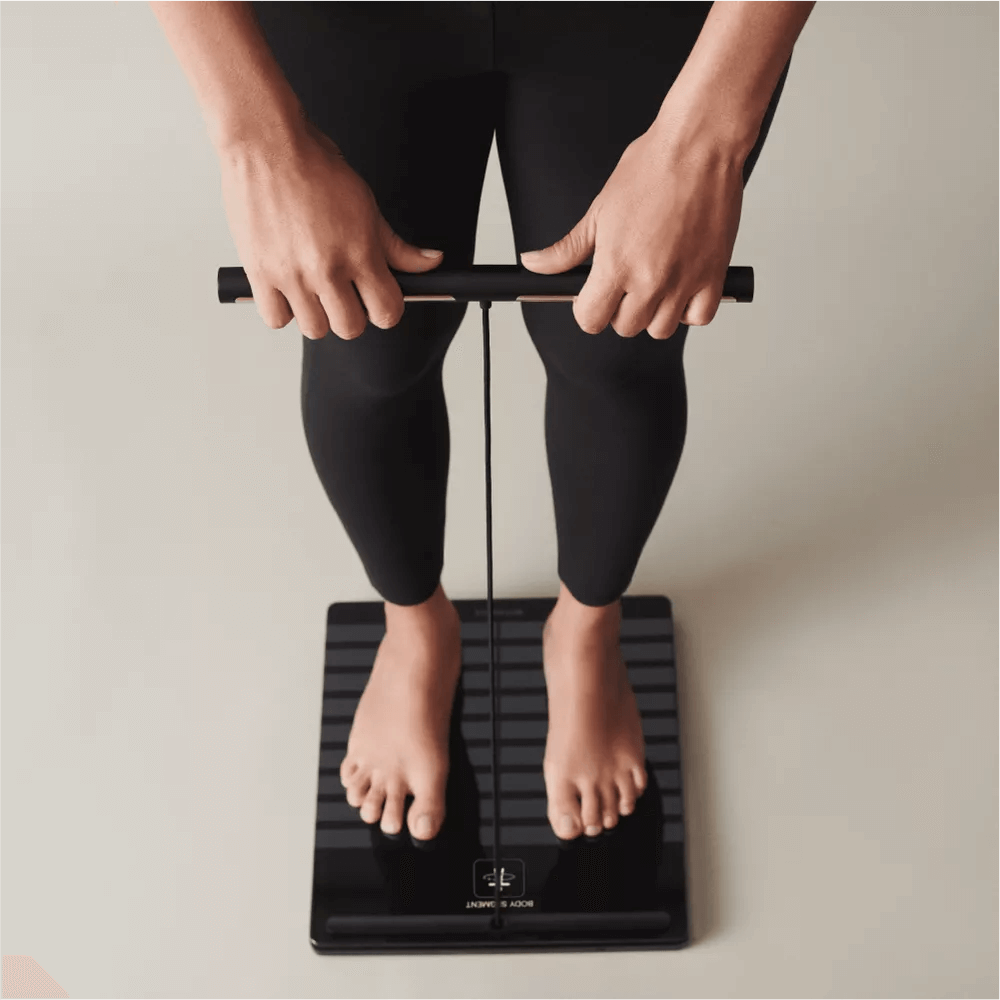
Other Withings scales can conduct BIA analysis but do so through your feet alone. The addition of the retractable handle with electrodes presumably affords more accurate data by measuring the current traveling from your hands to your feet versus just traveling through the lower body via your feet alone. Not only can see how much fat and muscle you have in the app after taking a measurement, you can also see how it’s distributed throughout your body. (Note that the scale does not measure bone mass).
What do you do with all this information? Knowing how fat is distributed through your body can help you pinpoint localized fat areas and alert you to potential risks. You can also determine possible muscle imbalances.
You also get estimated arterial age, measured based on how quickly waves generated by your heartbeat move along your arteries, that advises on cardiovascular health. While it can’t diagnose you, the data might point towards the potential for increased risk of cardiovascular disease when you get older. You can then use this information as motivation to make positive lifestyle changes. The measurement of visceral fat, meanwhile, can indicate things like high blood pressure or even asthma as well as cardiovascular disease. When it comes to general weight data, Withings Precision Technology enhanced algorithms purportedly offer consistent weight measurements up to 01. lbs.
Built-in Wi-Fi allows the scale to seamlessly sync with the Withings app. It has various lifestyle modes, including athlete, pregnancy, and baby, as well as the same Eyes Closed Mode you’ll find in other models like the Withings Body Smart scale I reviewed last year, which logs your weight in the app without the number appearing on the scale’s screen.
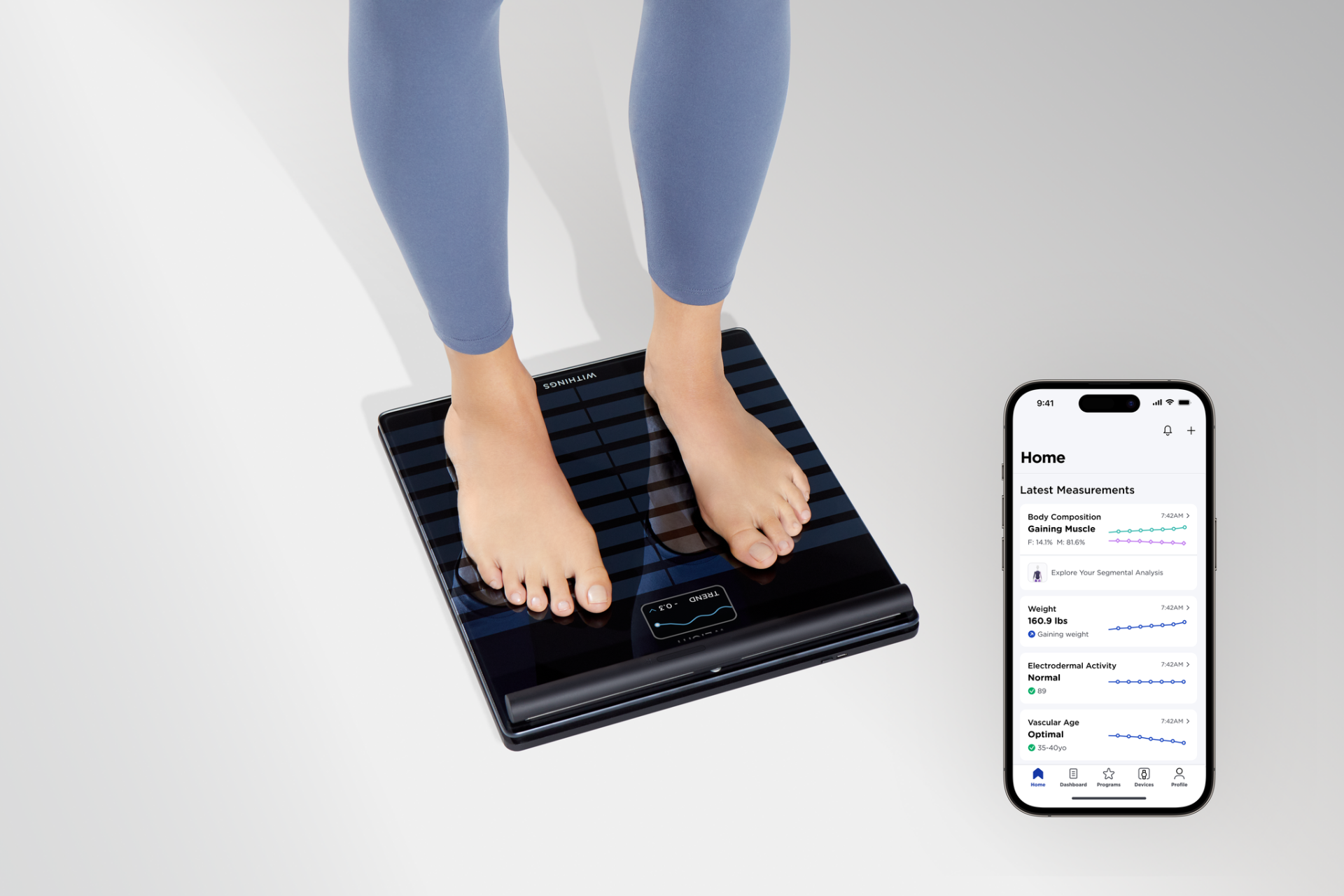
The Withings Body Segment has a 3.2-inch colour screen that displays the measurements, motivational messages, weather reports, and air quality information. It runs on a rechargeable battery using a USB-C cable, one big difference from the other models that run on standard replaceable cells.
The Withings Body Segment, the new flagship model in the line, comes in black and sells for $500 in Canada. It comes bundled with a three-month subscription to Withings+, which affords access to a Health Improvement Score and exclusive content, including workout classes, articles, recipes, and guided programs. The Withings Body Smart is $150 and Body Comp is $250.
Set up of the Withings Body Segment Smart Scale
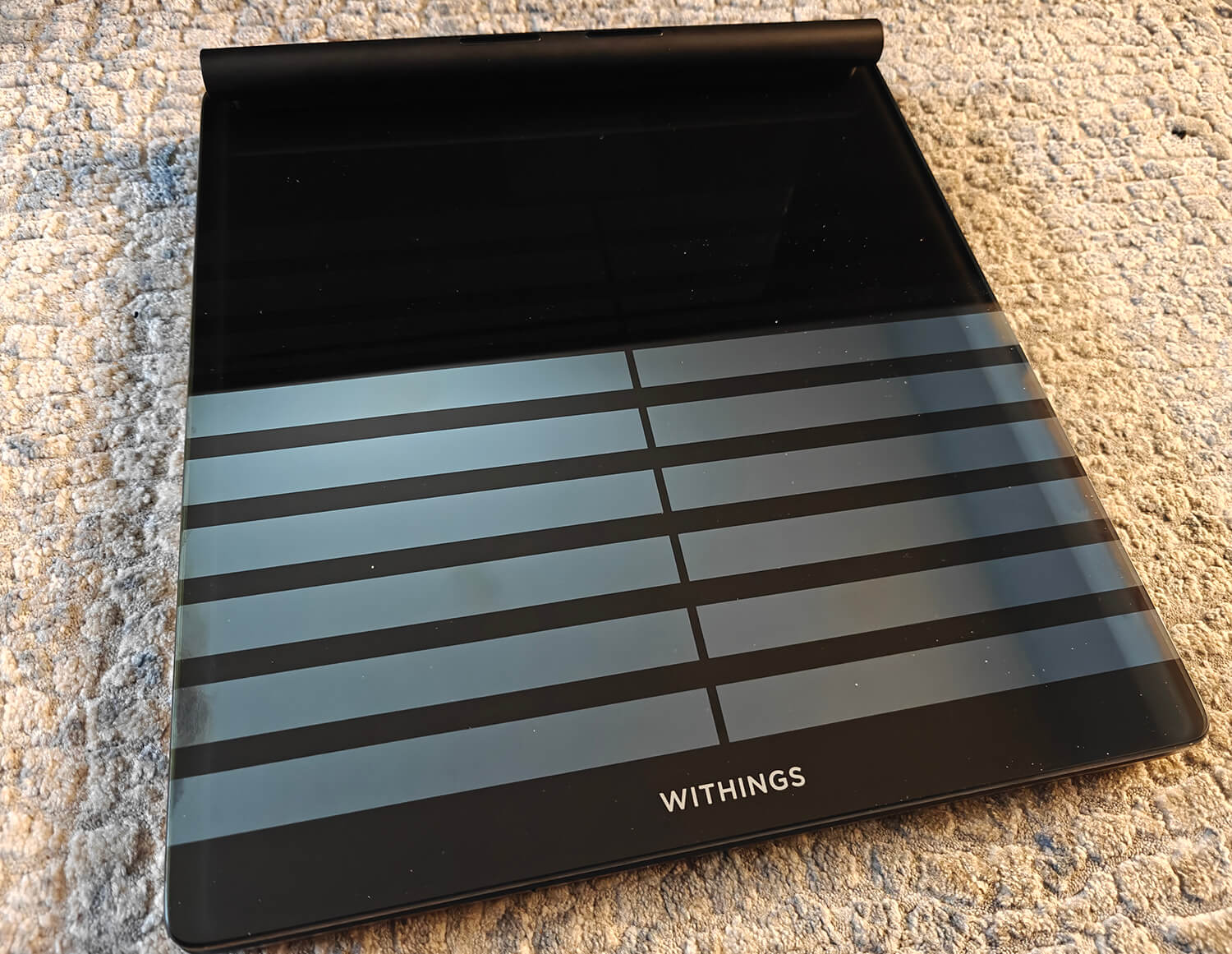
The Withings Body Segment is similar to the Body Smart scale with the same reflective, elegant design. It’s stunning, but it’s also a fingerprint (and footprint) magnet that will need to be wiped down daily, at least weekly. The main difference in design is the inclusion of the retractable handle along with vertical lines that run across the glass surface. These are to help you with the positioning of your feet to ensure accurate analysis.
Set up was simple. Once I turned the scale on, the Withings app I already had loaded on my phone instantly recognized it and began the pairing process. (Alternatively, download the Withings app and go from there). It was already charged so I didn’t need to wait, which was nice.
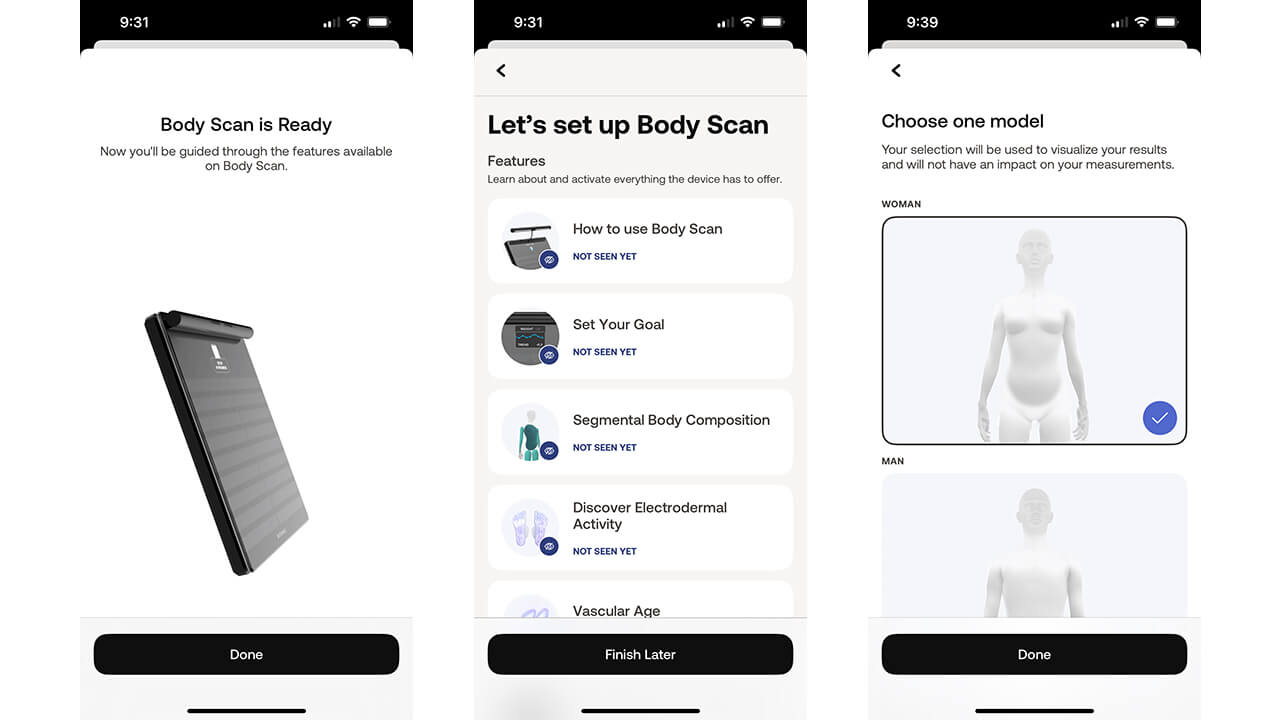
I love the detailed guide that walks you through all the features of the scale and how to best use it. Even though the actual set-up process takes mere minutes, set aside 10-15 minutes to familiarize yourself with the scale, most notably what all the data it provides means (see below for a refresher).
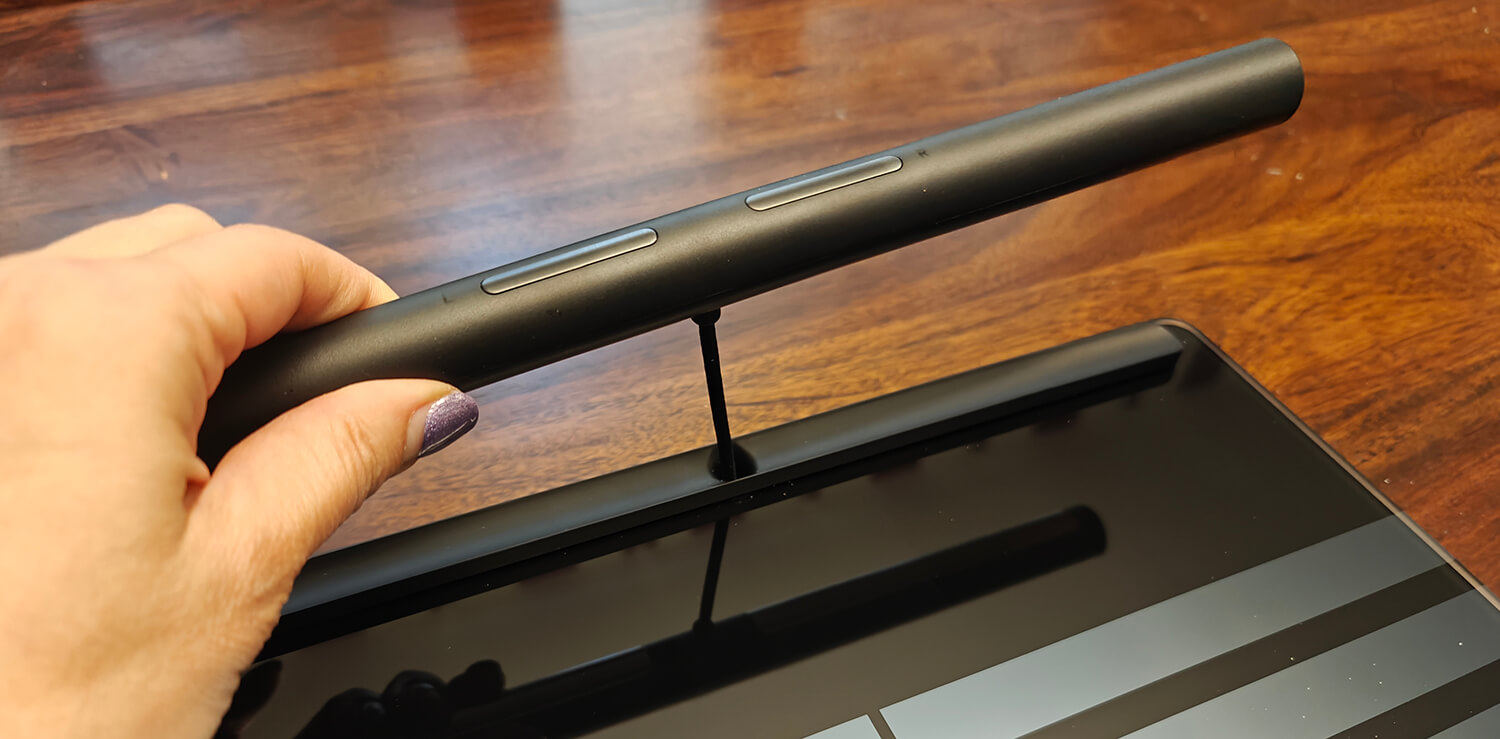
Once ready to step aboard, there’s nothing complex to it. Step on and wait for your information to appear on the screen. To use the Body Scan feature, grab the handle at the top with both hands, ensuring the proper hand is holding the correct side.
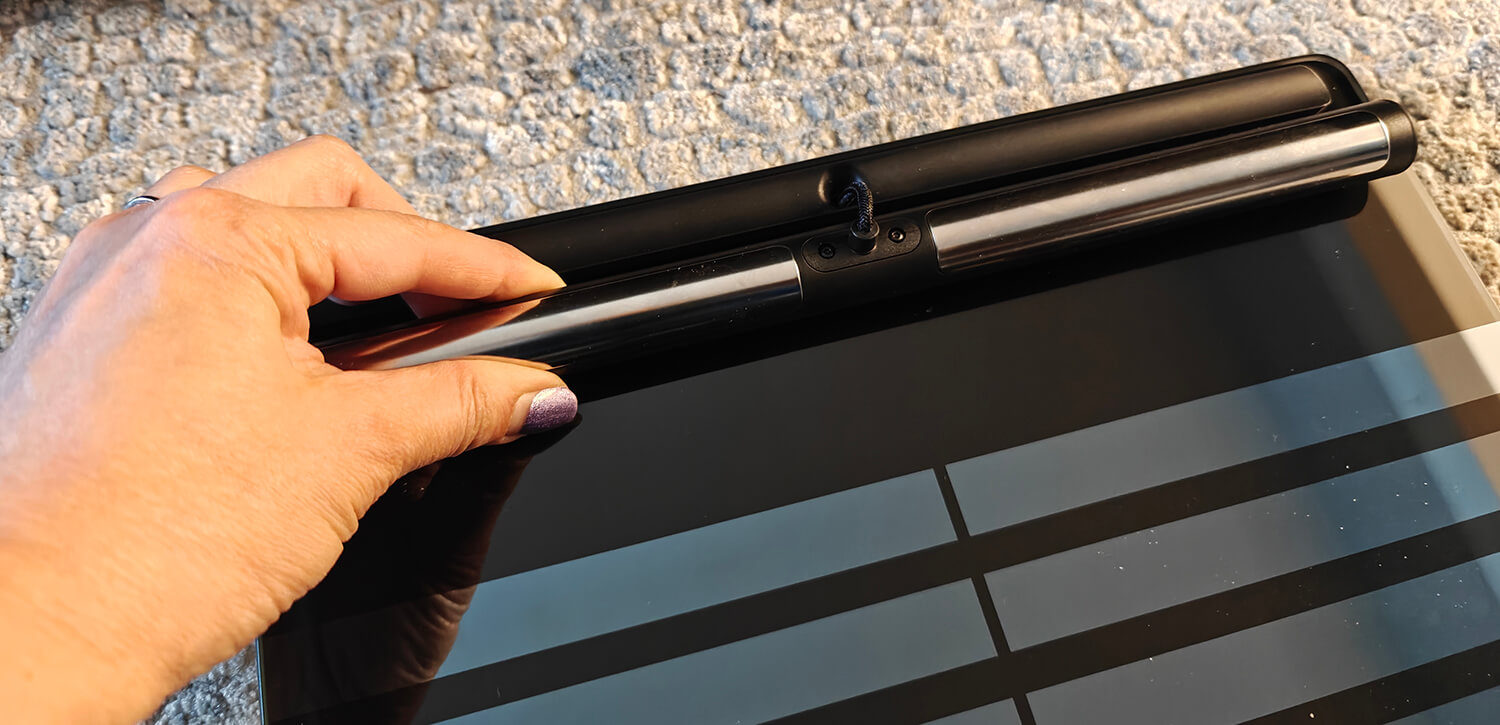
Your palms should have contact with the electrodes on the undersides, just like with sensors on the handles of a stationary bike at the gym.
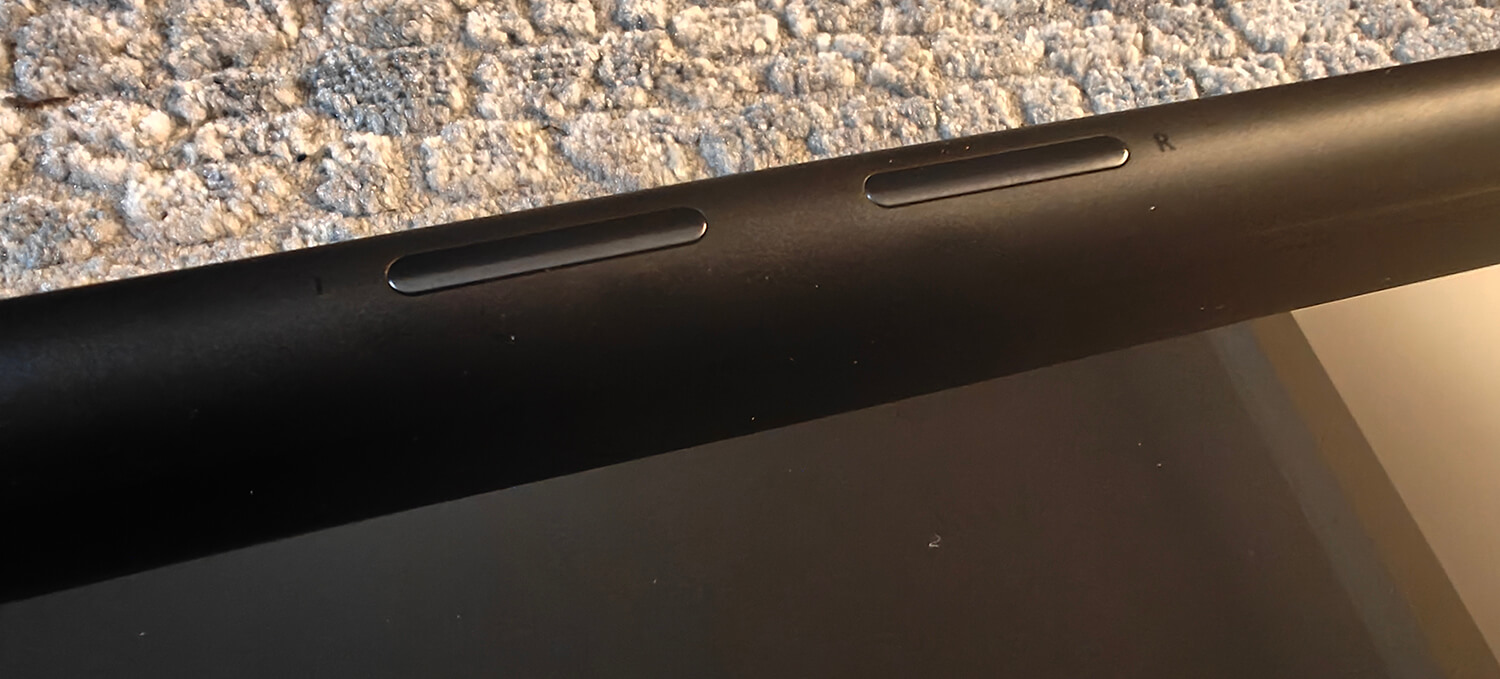
Place your thumbs on the two electrodes at the top as well. Slightly lift your arms away from your torso so they aren’t touching any other part of your skin, like your waist or chest, which can interfere with the measurement. If you find this difficult, wear light clothing to prevent the skin-to-skin contact. Make sure you’re barefoot with your feet centered on the horizontal stripes. Stay as still as possible while a measurement is being taken. Note that while the screen displays pounds (or kilograms), visceral fat, muscle mass, BMI, EDA, and heart rate, you will need to check the app to see full body composition stats after a reading.
The handle is easy to grab and pull up and easy to position back in place. But if you prefer not to bend down to grab the handle to take a measurement, you can use the included wall handle mount that keeps it at eye level. This option is ideal for folks with mobility issues, like elderly individuals who can’t easily bend up and down each time they want to measure. I didn’t set-up the wall handle mount, but I love that Withings thought of this small but crucial detail.
The scale makes a noise and slight vibration as the measurements are taken, similar to the sound you would hear from a smartphone on vibrate when a call comes in. Each bit of data appears one at a time until you see the message “see you soon!” advising you can step off. As noted, from there, you can visit the app to get a bigger picture of the measurements.
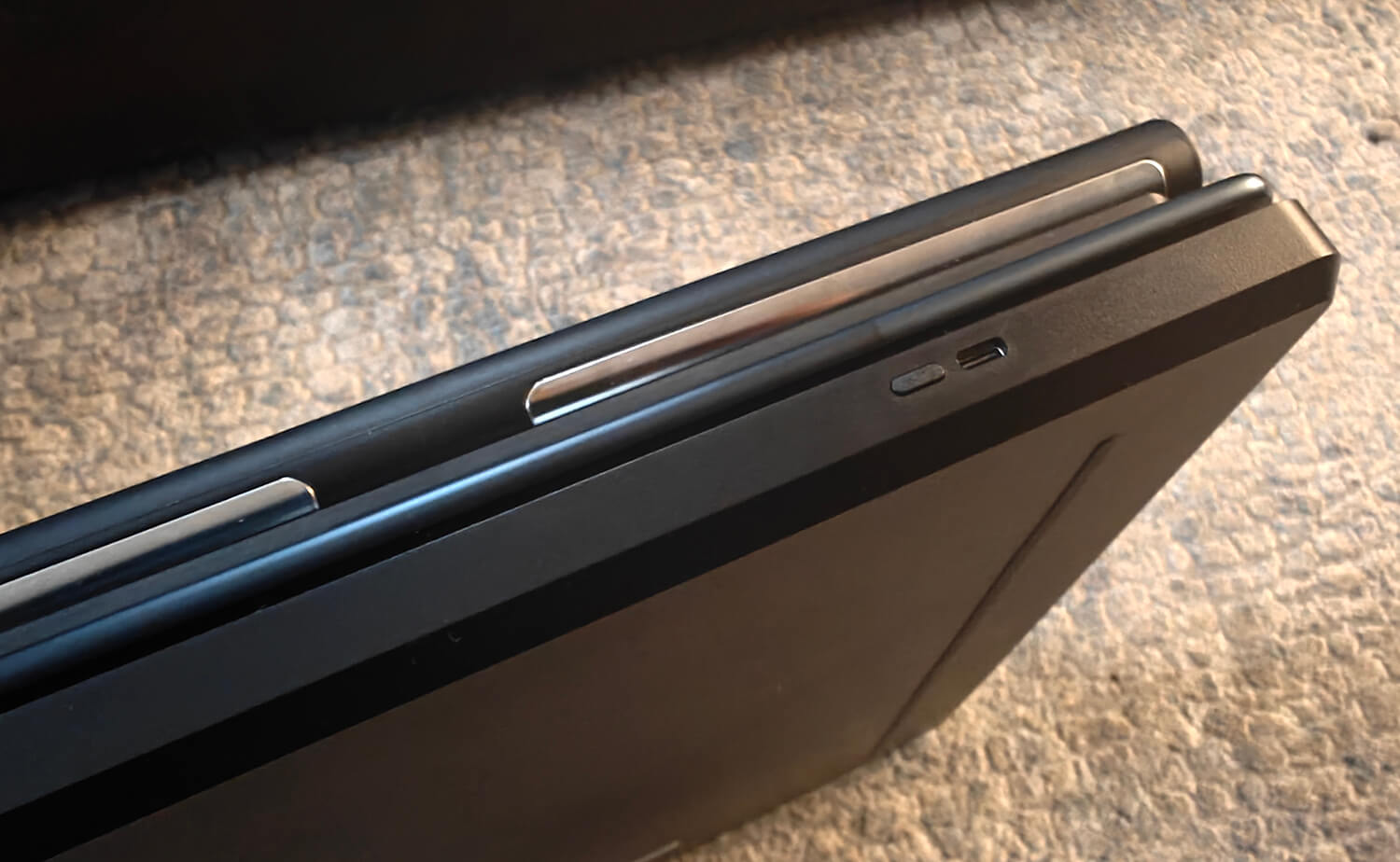
I wish the scale could be powered with traditional cells like others: it’s never fun to have yet another cord and device to plug into the wall to recharge. With that said, the battery lasts for up to one year, so as long as you keep the cord in a safe place (I’d suggest in a cabinet in your bathroom where it’s probably going to stay), you can give it a battery boost as needed. Since it uses standard USB, you can charge using virtually any cable you have on hand as well.
How to Read the App Data
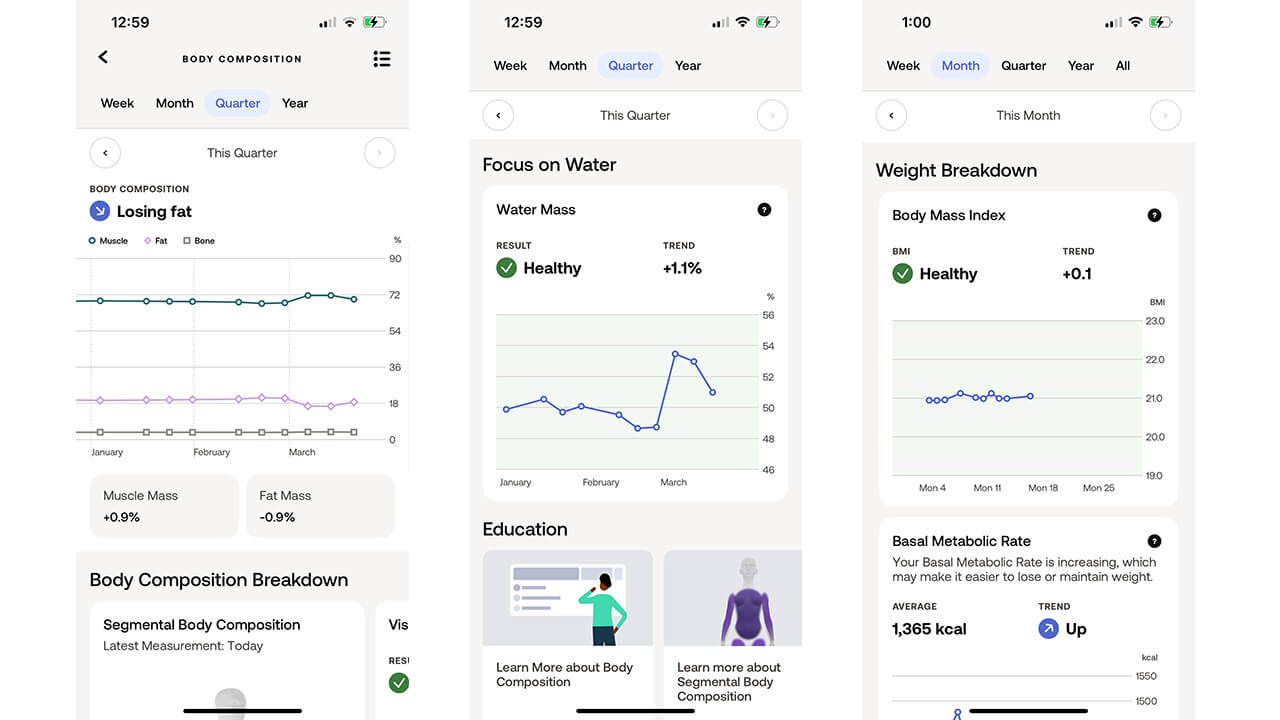
Where the magic truly lies with this scale is in the app, which can sync with Apple Watch or Google Fit to display data from a compatible smartwatch as well, one of my favourite features.
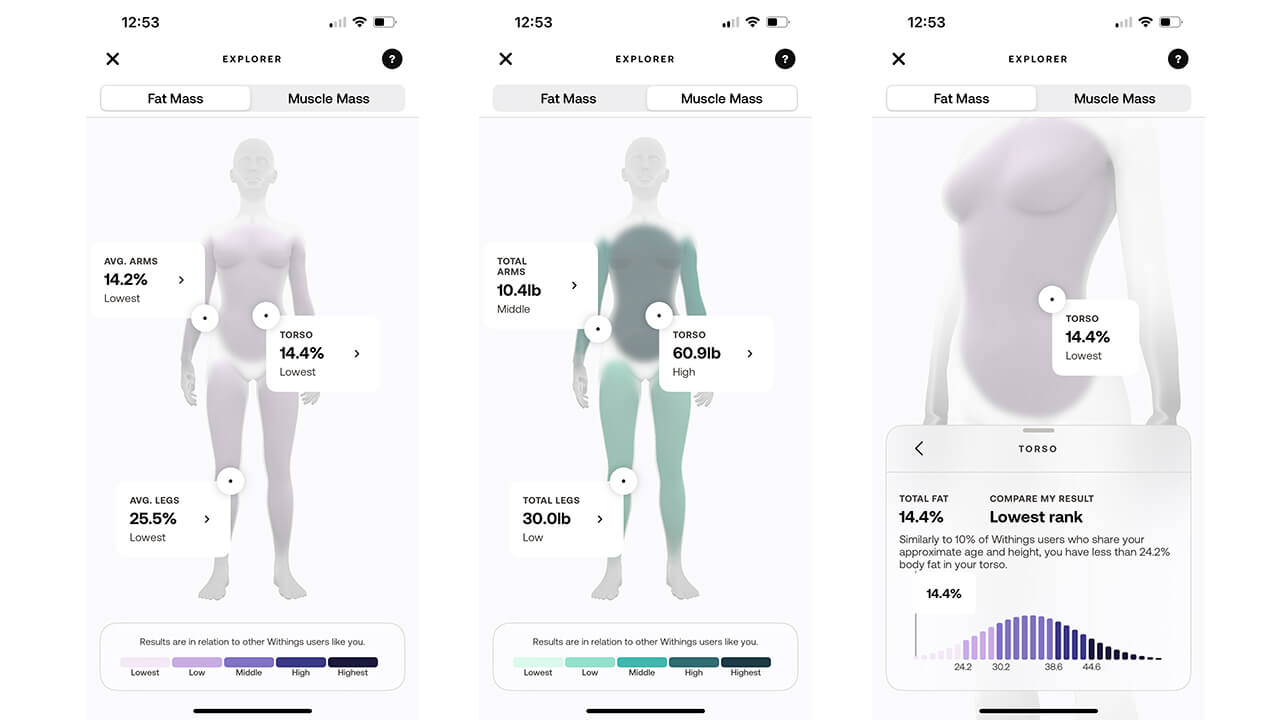
Beyond what you’d get with other Withings smart scales, the Withings Body Segment measures fat and muscle mass divided into three areas: torso, arms, and legs. Once you select your gender (woman, man, or neutral), as well as input your age and height, you’ll see a 3D image depicting how things look in your own body. There are two views: one for fat mass and one for muscle mass, with percentages indicated for each of these three areas. The data is compared to other Withings users similar to you and noted on a scale from lowest to highest.
If you’re lowest for fat mass in arms, for example, it means you have less fat mass in your arms than most Withings users of the same age and height as you. If you have high muscle mass in your torso, it means you fall on the higher end of the scale, with more muscle mass in that body area than other Withings users in the same age and height category. This at least gives you an idea of how you compare to other Withings users.
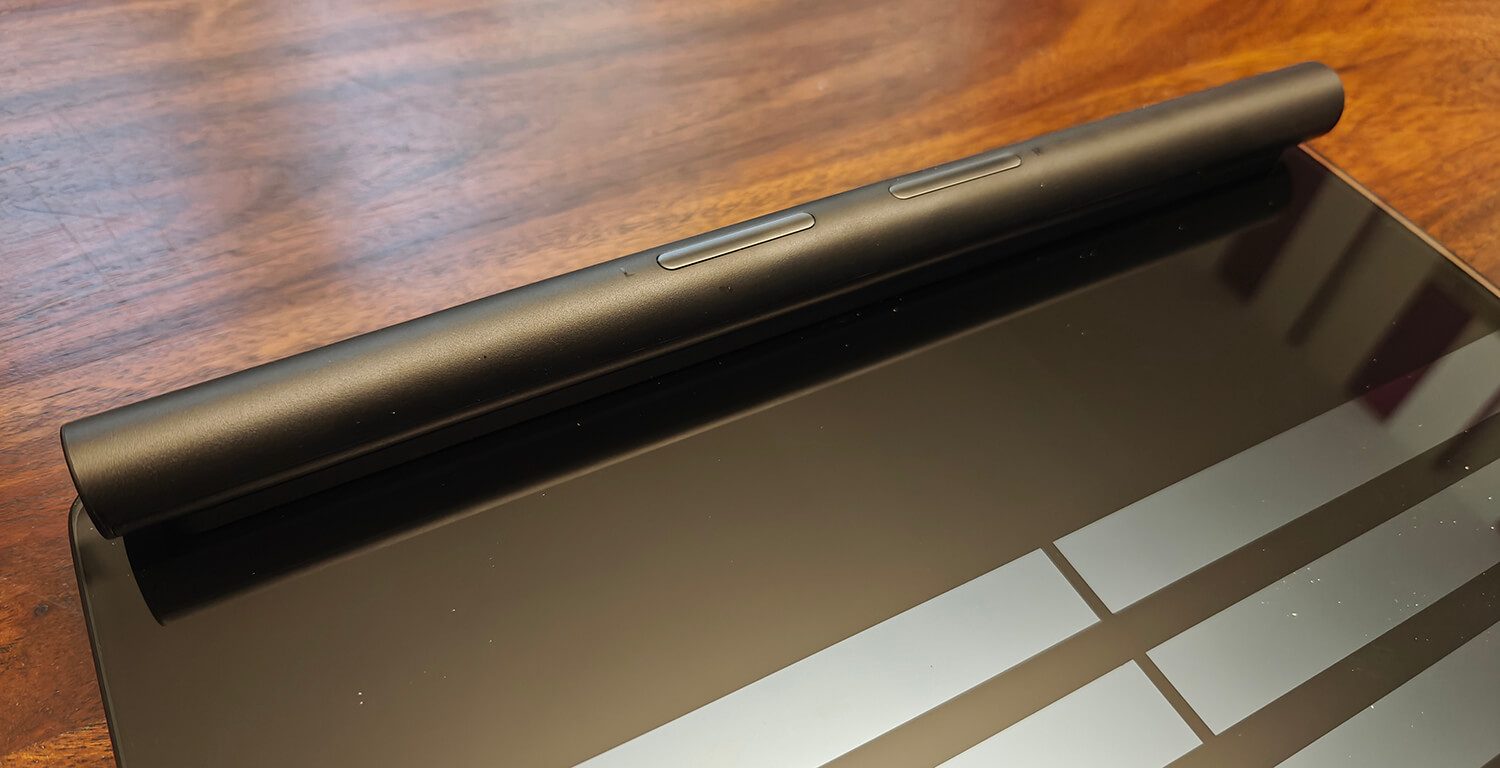
I noticed these numbers could fluctuate more than a bit from one day to the next, which leads me to believe that there are numerous factors that can impact the reading. I usually weighed in the morning prior to eating and after emptying my bladder. A few times, however, I weighed after my workout. At one point, the scale measured an 8% gain in muscle mass and subsequent 8% loss in fat mass, which seems like a lot to accomplish in just two days. The more you step on the scale, however, and the more you keep this consistent, the more confident you can feel in the results.
I also noticed slight differences between the measurements I received with this scale versus with the Withings Body Smart. The Body Segment generally logged me at a higher weight (anywhere from 1-1.5 lbs. higher) while the Body Smart displayed a higher percentage of visceral fat and less muscle. Assuming the Body Segment scale provides a more accurate reading, I’ll take it!
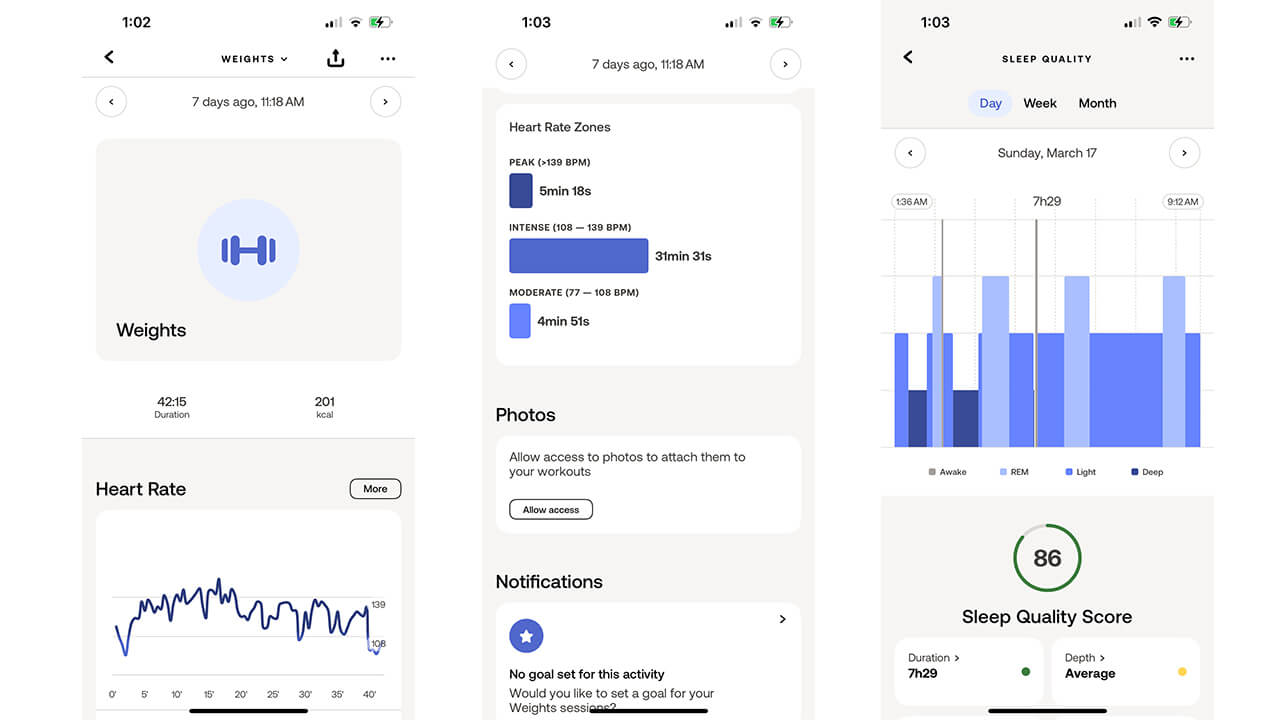
One of my favourite features remains how beautifully the app syncs with an Apple Watch. You can see here that the Withings app tracks data captured from my Apple Watch, including recorded exercises, sleep health, and more. The same occurs within the Apple Watch app, which shows my weight data provided from the Withings scale measurements.
Should You Buy The Withings Body Segment Smart Scale?
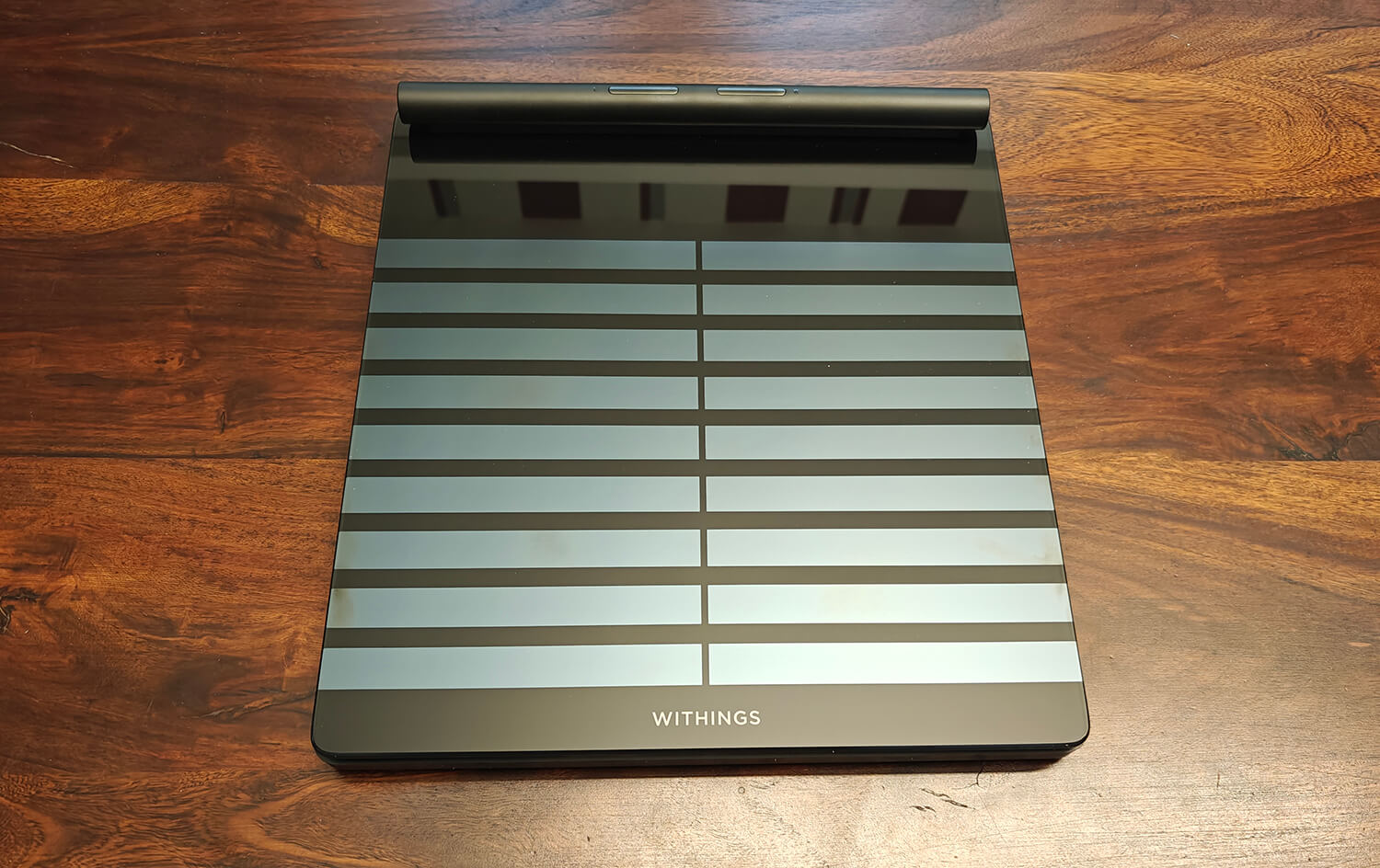
Smart scales like this one are about more than just tracking your weight and body mass index. If you’re living a healthy lifestyle, working out, maybe trying to lose weight or build muscle, you’ll find this scale useful. It keeps track of progress with detailed figures that can help you determine what areas of your body you need to work on more, if you’re building muscle and/or losing fat, and other important stats.
But what’s interesting about this smart scale is that it isn’t just for the fitness buffs. The detailed data you get is designed to help any adult learn more about their body composition. This can alert you to potential concerns, like if you have a high percentage of visceral fat, you’re retaining a lot of water, or you carry a lot of fat mass in your stomach. From cardiovascular disease to diabetes, getting a better picture of your body can help motivate you to make changes.
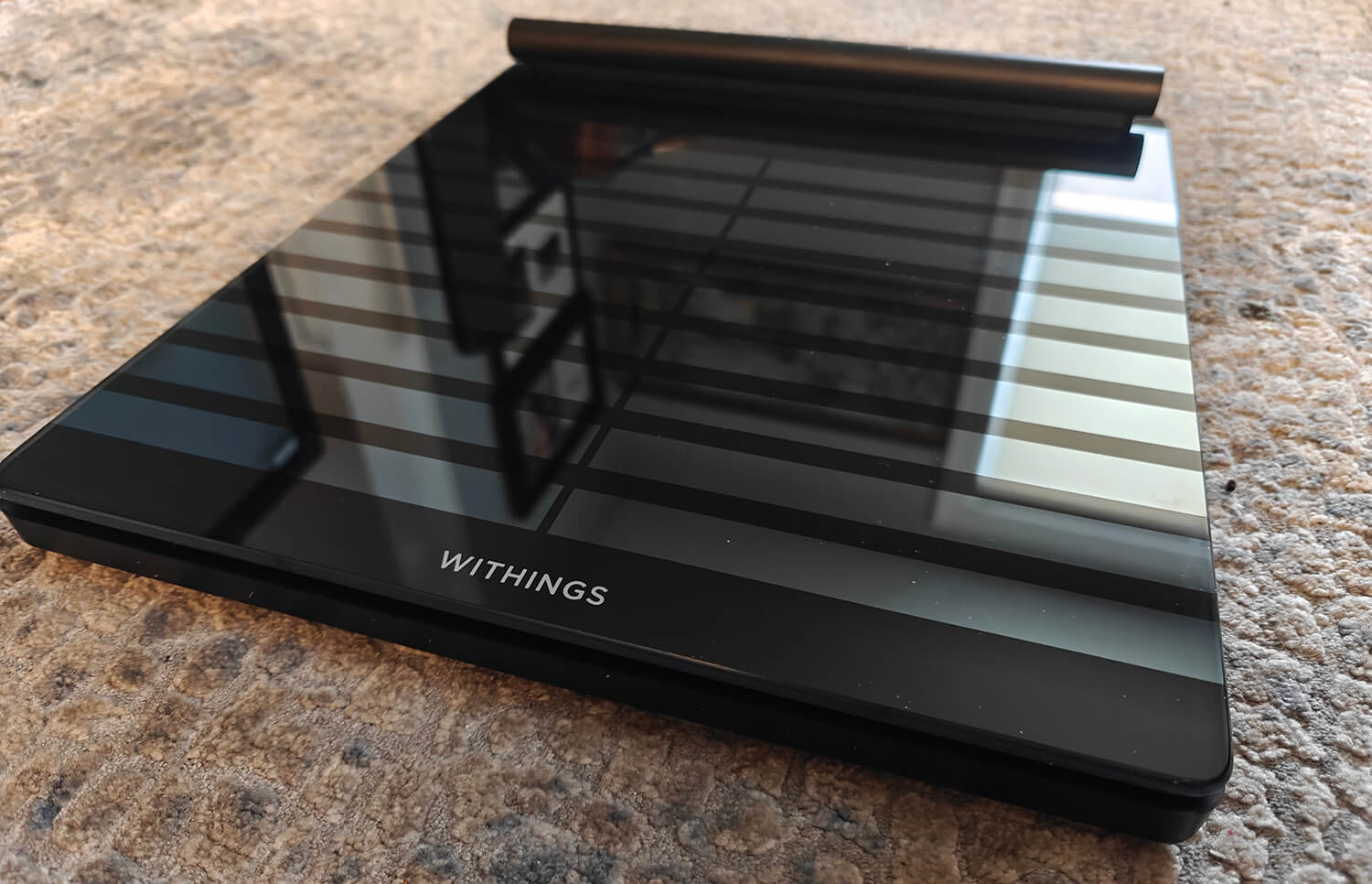
You can show a history of measurements in the app to your doctor at the next visit, which can provide them with useful insight to take into consideration. In fact, there’s an option in the app to share a PDF health report covering the last month, quarter, or a custom date range with a doctor, coach, perhaps even a family caregiver.
If you’re serious about fitness and health, or you’re concerned because you’re overweight or have a history of cardiovascular disease or diabetes in your family, this scale is worth the investment. To start small with the basics, like visceral fat, EDA, and a general idea of lean, fat, and muscle mass, you can step down to the Withings Body Smart scale and save a few hundred bucks. It provides all the same identical data without the nitty gritty segmental analysis.
For someone like me who wants to keep track of my progress (or regressions) on an ongoing basis, you can’t put a price on knowing as much as you can about your health, your body, and its composition. And when it comes to knowing it all, there’s no scale quite as smart as this one.
The Withings Body Segment smart scale is about $500 in Canada.
What Does All the Data Mean?
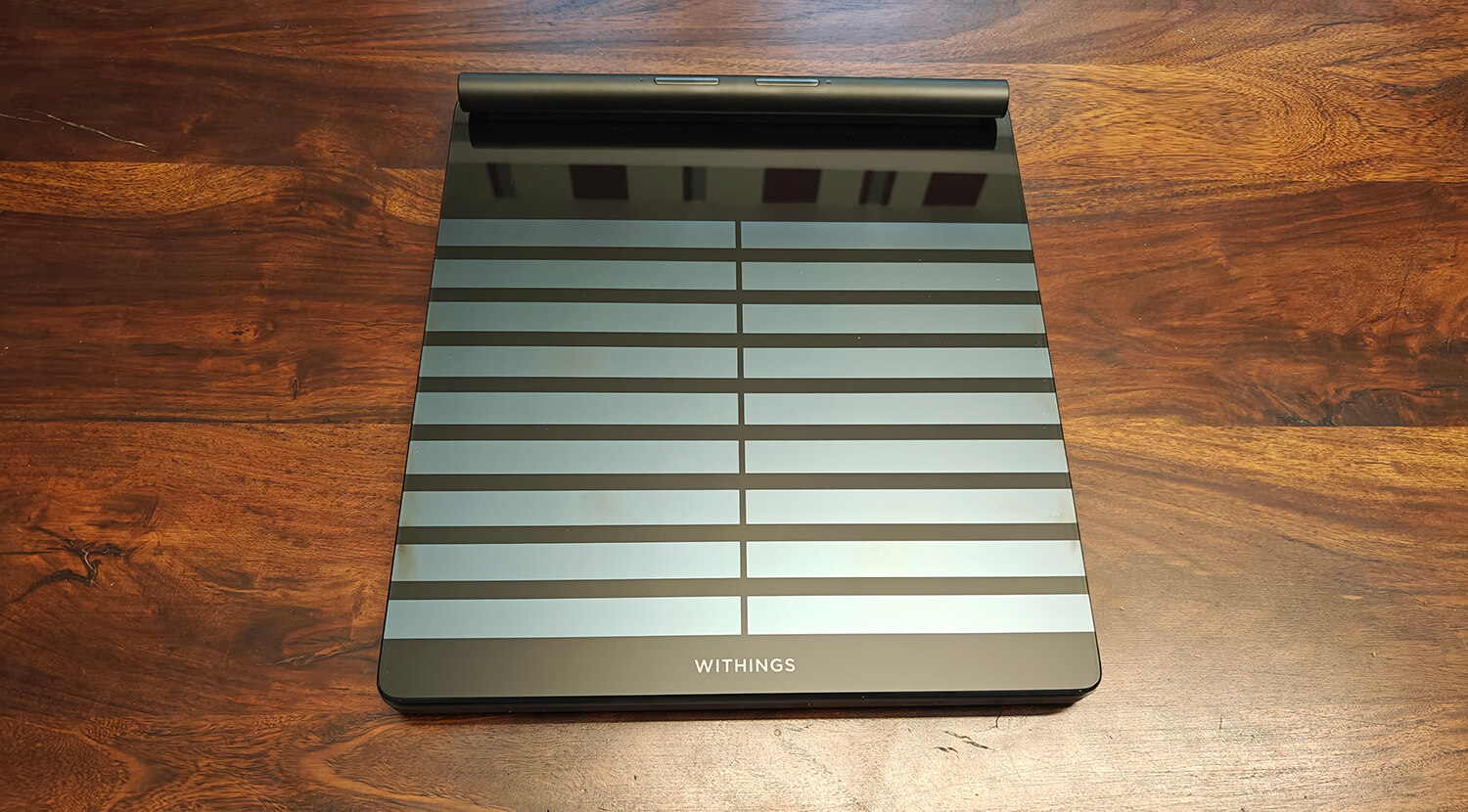
What good is repeatedly stepping on the scale and seeing this data in the app if you don’t know what it means? Here’s a quick explainer to help you interpret everything.
Electrodermal Activity Score (EDA)
This score measures how your nervous system controls the sweat gland activity in your feet. If the score is low, it means you have low sweat gland activity. You can improve this by eating healthier, exercising regularly, and checking with your doctor to see if there are any potential health issues that might be causing this. Note that an aggregate score needs to be taken over the period of about a month, so it’s best to log this at least weekly and look at the app at the end of the month to see the score.
Vascular Age
This number tells you how stiff your arteries are. It’s typical for them to get stiffer with age, but if you notice a major change in the number, this could be an indication of heart disease. The number is measured by checking how quick the blood pressure wave is along your arteries. This, in turn, helps Withings determine arterial stiffness. For this stat to be accurate, it’s crucial that you enter your correct date of birth and height so it can take this information into account. To get the vascular age number, the scale first needs take at least five measurements.
Basal Metabolic Rate (BMR) and Metabolic Age
Everyone loves to talk about how they have a fast or slow metabolism. When I was a teenager, I could eat terrible junk food all day long and remained skinny as a twig. That isn’t so much nowadays because generally as you age, your metabolism slows down. Metabolism is the process whereby food converts to energy that is then used to fuel your body and all its important functions. BMR, specifically, refers to how much energy your body needs to function when you’re at rest. This means to do simple things like breath, produce cells, eperience proper circulation, and absorb nutrients.
Thus, losing weight isn’t just about eating at a calorie deficit but also about maintaining your metabolism so you burn the same number of calories when you are at rest. If you gain muscle, for example, it will increase your BMR. If you lose weight in an unhealthy way leading to lost muscle mass, it can be difficult to maintain the weight because it also reduces your BMR. To maintain a healthy BMR while reducing calorie intake to lose weight, consider adding muscle strengthening exercises to your workouts and making sure you get enough protein in your diet.
Visceral Fat Index
Visceral fat is the type of fat found around organs and in the abdominal area, surrounding the stomach, liver, intestines, and other organs. It’s important to stay on top of visceral fat because this is the type of fat that is most linked to various health problems. You may think visceral fat is that little pouch of skin you can grab on your stomach after having a nice big dinner or failing to exercise for a few days. That fat, however, is called subcutaneous fat. Visceral fat is deeper than just under the skin, located within your abdominal muscles.
Body Mass Index (BMI)
This is the figure that most people are familiar with when it comes to taking a measurement beyond just a three-digit weight. But it isn’t, as some may believe, an indicator of body fat. It’s merely an estimation taken by dividing your weight by your height. Typically, a BMI of 18.5 or under is considered underweight, 18.5-24.9 is healthy, 25-29.9 is overweight, and 30 and higher is obese. But this should just be used as a general guide for adults.
Lean Mass
To get this number, take the difference between your total body weight and total fat mass. What’s left would be your lean mass, which is everything in your body that isn’t fat, including your organs, bones, body water, and muscle mass. The better your lean mass number, the better your metabolism likely is, and the easier it will be for you to maintain a healthy weight. A good amount of lean mass can also potentially help reduce inflammation.
Water Mass
Our bodies are partly made up of water, and water mass measures exactly how much is in yours. This includes both intracellular water (water inside the cells) and extracellular water (outside the cells). Both these figures are taken into account when calculating this measurement.
Fat Mass and Muscle Mass
Fat mass is the total amount of fat in your body, and it’s important for regulating temperature, storing energy, and managing hormones. If you have too much, it can lead to health issues like high blood pressure, diabetes, and heart disease. If you have too little, you may encounter health issues like low bone density or fertility issues.
By contrast, muscle mass is the total weight of muscle in your body, which helps with metabolism and overall health and wellness.




